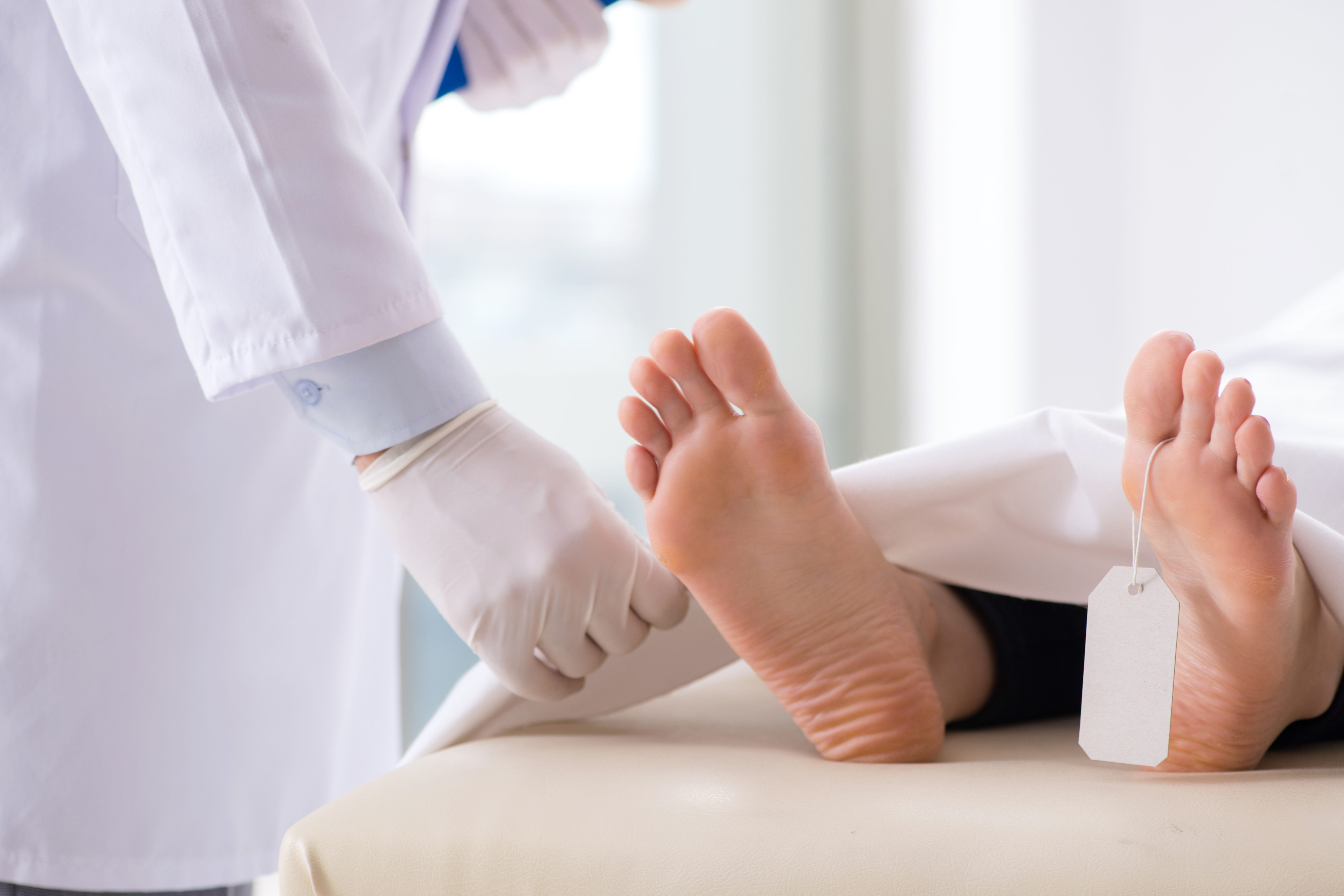Getting It Right – The History of Forensic Pathology in America
The earliest investigations into death involving methodical inquiries were mostly concerned with suicide. The coroner system dates back to medieval England. At that time a coroner was called a crowner because he served as a royal judicial representative. The term coroner evolved from there. In medieval England, the duties were collecting money owed to the monarchy, serve writs and summonses, arrest the sheriff, if necessary, seize sea life caught that was only fit for the palate of a king, and investigate shipwrecks and treasure troves. The crown had to receive its share. They also investigated sudden or unnatural deaths to determine murder or suicide as they were both crimes against the crown. At that time, these coroners had no basic medical knowledge and learned little from looking at the dead body. They viewed the body, heard from witnesses, and then a jury voted on and rendered a verdict. There was no science involved.
When America was colonized, English common law came with the settlers. Thus, our current sheriff, justice of the peace, and coroner all originated with those laws and practices from England. One of the earliest American coroner’s inquests took place in New Plymouth during the winter of 1635. The earliest forensic autopsy was performed on a Native American in 1642 in Maryland.

America progressed in many ways over the next three centuries, however, very little changed in how unnatural deaths were investigated. Elected coroners who might have been the sheriff, magistrate, justice of the peace, undertaker, woodworker, baker, or butcher. They were either elected or appointed and thus the position was very political. Because of his lack of knowledge about medicine, he usually had help from a doctor in determining the cause of death. These doctors were called either a coroner’s physician, medical referee, or medical examiner. These coroners were most likely adequate in rural areas. However, as the country became more populated and cities grew larger and larger, death investigation became more difficult because people didn’t know everyone in town. Thus, the deficiencies of the coroner system became more evident, and the coroners became notoriously corrupt and incompetent, being in a position ripe for bribery, kickbacks, and extortion. The coroner’s physicians were also indifferent and incompetent because they were considered mediocre physicians to start with. This system persisted well into the 20th century. Causes of death were often questionable to the point of absurdity. Doctors were not taught about diagnosing cause and manner of death in medical schools as this was not part of any medical school curriculum. Police were also not instructed in scientific homicide investigation often hindering by destroying evidence, walking through blood, moving the body, handling the weapon, putting their fingers in bullet holes in the body, and generally not handling the scene properly. Progress in the death investigation field was slow and only progressed when scandals occurred to spur change.
Fortunately, a woman named Frances Glessner Lee, born March 25, 1878, as Frances “Fanny” Glessner to a wealthy Chicago family, developed an interest in the medical field at an early age. She was fascinated with mummies and anatomical drawings. At that point in history, drugs and patent medicines were not regulated and there was no requirement for drugs to be proven safe and effective. She had surgery to remove her tonsils as a child and as a result began to accompany local doctors on rounds at convalescent homes. She was recruited to assist the doctor with procedures and minor operations on occasion. She began to use the family kitchen to make remedies, broths, and wine jelly for the patients. Her brother went to Harvard in 1890 and became friends with a medical student named George Burgess Magrath. Fanny got to know Dr. Magrath through her brother.

In 1893, Fanny, age 15, went to the world’s fair in Chicago with her brother and Magrath and viewed a photography exhibit from France by the Paris Police Department. At that time, identifying criminals was difficult, utilizing poor photographs which made it hard to identify the criminals. The exhibit at the world’s fair by Alphonse Bertillon devised a system to record five primary measurements which included the length and width of the head, the length of the middle finger, the length of the left foot, and the length of the forearm from the elbow to the extended middle finger. He theorized thatno two people were exactly alike. He also recorded hair and eye color and standardized photographs which is now known as the “mug shot.” This system was called anthropometry.
George Magrath remained at Harvard as a pathology assistant after graduating medical school, teaching medical students and being a consulting pathologist for several Boston hospitals. Fanny did what every woman of society did at that time, married, and had children. However, she and her husband later became estranged, divorced, and she raised her children alone. As she was a woman of wealth, who was interested in many things, began to make various “tiny”, to-scale miniature people which she used to perform for guests and give as gifts. It was noted that her figurines were perfect to the last detail.
Fanny remained interested in medicine and stayed in contact with Dr. Magrath through the years. By 1922, Dr. Magrath was exasperated with the medical examiner system because it did not have independent authority to investigate deaths. They were not even consulted until the police or DA had determined that violence may have occurred. Therefore, causes of death that were not obvious, but subtle, or disguised by being run over by a train or burned in a fire, might be totally missed and the murder left free. Evidence was destroyed, altered, or undetected by the police. Dr. Magrath set out to change this being the first medical examiner in the US with training in pathology. He also gave weekly lectures to Harvard Medical School students on legal medicine as an elective in the 3rd year. There was little literature published in America regarding legal medicine, unlike Europe, where this field was much more developed. Therefore, he spent considerable time in Europe immersing himself in legal medicine, incorporating his knowledge into the Harvard curriculum. He reformed the Boston medical examiner system and New York coroner system.

By coincidence, Fanny Glessner Lee and Dr. Magrath ended up being hospitalized at the same time in Boston. They rekindled their friendship and Fanny found his work fascinating. He discussed the difficulty he had explaining and describing the death scene. Two dimensional diagrams were little help. Therefore, Fanny suggested that she make a small model of the room, drawn to scale, with the victim and the other details in the correct place. Thus, the idea for her nutshell models came into being. They also discussed what would become of Dr. Magrath’s research and legal medicine library upon his death. They came up with the idea of starting a Department of Legal Medicine at Harvard. Fanny was able to make this happen due to her immense wealth. She learned about death investigation and observed autopsies, ultimately holding seminars for police detectives on crime scene investigation, consulting at the Department of Legal Medicine at Harvard, collecting large amounts of literature for the legal medicine library, lobbying the president of Harvard for more space for the department of medicine, assisted with the selection of professors, encouraged the department of medicine to work with the Boston medical examiner’s office to perform their autopsies so students would have cadavers to work on, educating the public regarding the modern medical examiner system, promoted the modern medical examiner system to the rest of the US, held medicolegal conferences for doctors, medical students, law enforcement, undertakers, and the press, reorganized the Massachusetts medical examiner system, and proposed a plan for unification or standardization of dental records advancing the field of forensic odontology which was unheeded.
By 1944, only one state had gotten rid of coroners in favor of a centralized medical examiner system… Maryland. Since Maryland was so successful in ridding itself of the corruption, Fanny wanted to have other states replicate their system working actively with OK, OH, LA, MI, IN, and NE. She also had an affinity for working with police officers and diligently worked to educate detectives about proper death investigation. She was commissioned as a Captain in the New Hampshire State Police in 1943 at the age of 66. She created the position of medicolegal investigator which now is known as a homicide detective. She attempted to get the Harvard schools of medicine and law to work together to perform research and publish papers. However, this collaboration never materialized and since her death, Harvard has dismantled the department of legal medicine.

In 1943, Fanny hired a carpenter to make to-scale models of crime scenes for both medical students and law enforcement to study. They were intended to teach the investigator not to jump to conclusions, not to make a snap judgement, and not to observe evidence that fitted a favored hypothesis. She wanted the students to keep an open mind. They were featured in Life magazine in 1946. She ended up constructing 18 of these models which are now housed at the Forensic Medical Center for the state of Maryland in Baltimore. Her seminar in homicide investigation is still held there today. The nutshell studies are not open to the public.
Ultimately, her goal of introducing legal medicine to the general public remained elusive. Fanny died of cancer at the age of 83 in 1962. Without her support, Harvard’s legal medicine department went into a death spiral. The legal medicine library named after Dr. Magrath was incorporated into the main medical school library. They no longer have a forensic pathologist on staff at the medical school.
Fanny was definitely a powerful force in creating the field of modern forensic medicine. Today, an average of 38 board-certified forensic pathologists enter the workforce annually but it is not enough to replace the pathologists who retire. As of 2020, only about 1/3 of medical examiners offices in the US have a toxicology laboratory, histology laboratory, and in-house x-ray services. Problems affecting forensic medical centers are a lack of resources, a lack of funding, a lack of training, a lack of adherence to the standards of practice, and a lack of support. Forensic science is forever evolving.
The National Board of Medical Examiners was founded in 1915. According to the CDC, 16 states and DC have a centralized medical examiner system; 6 states have a county or district-based medical examiner system; 14 states have a county-based system with a mixture of coroner and medical examiner offices; 14 states have a county, district, or parish coroner system; and 25 states have a state medical examiner. Of note, Mississippi’s system consists of a coroner who is a physician (designated the chief medical examiner for the county) who must successfully complete a death investigation training school, while a coroner who is a non-physician is designated the chief medical examiner investigator.
Sadly, Fanny’s vision of an America consisting of only medical examiners without coroners is only beginning to become a reality.
Bibliography
Centers for Disease Control and Prevention. (2019, Jan 12). Death Investigation Systems. Retrieved from CDC: https://www.cdc.gov/phlp/publications/coroner/death.html
Dewan, S. (2022, June 20). Failed Autopsies, False Arrests: A Risk of Bias in Death Examinations. Retrieved from The New York Times: https://www.yahoo.com/now/failed-autopsies-false-arrests-risk-181512240.html?guce_referrer=aHR0cHM6Ly93d3cuZ29vZ2xlLmNvbS8&guce_referrer_sig=AQAAAEkHhcX_KFyH3dZvJYJkcbXWa0WuKViBj7N07Yo-ToiNMs-T9w2LZ4bfJ-8-JOmE5a10GojxLTPsqjas0Ww27woKdfwlDe_6DsrfheTmKlQANf
Goldfarb, B. (2020). 18 TIny Deaths: The Untold Story of Frances Glessner Lee and the Invention of Modern Forensics. Naperville, IL: Sourcebooks.
Don’t miss our newsletter! Topics covered are:
Assault / Trauma
DUI / General Medical
Child & Elder Abuse / Neglect
Mental Health / Toxicology
Sign up here.











